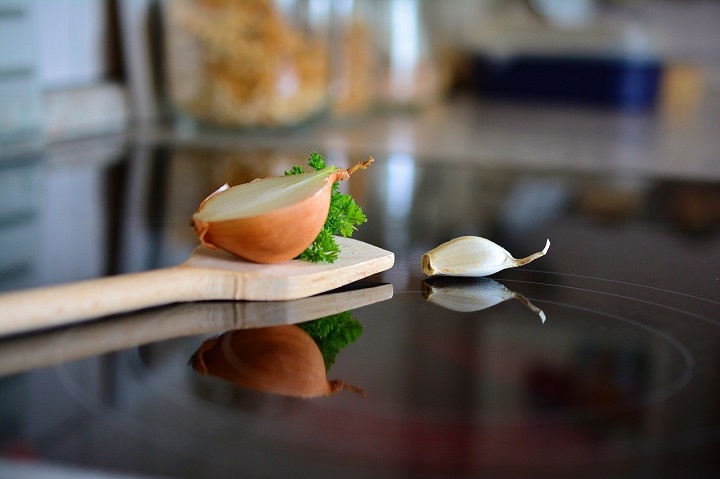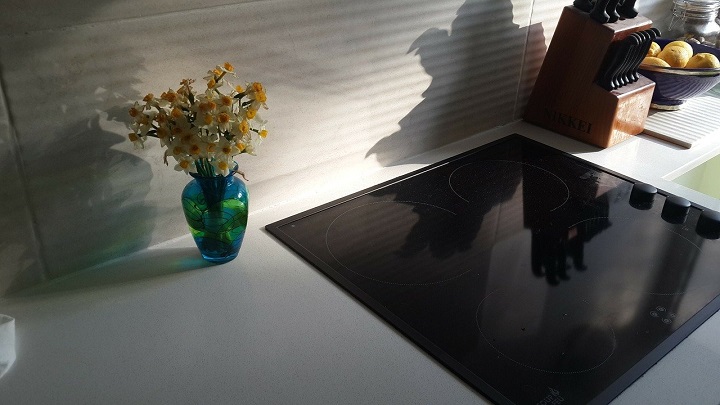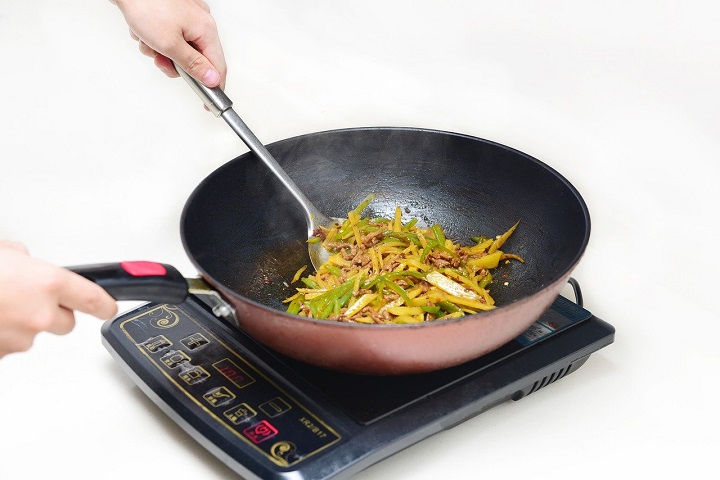Induction cooktop guarantees a more exact warmth, but they could also save you money in the long haul because your cookware gets most of the heat instead of the air around your cooktop. It employs an electromagnetic field to heat a dish while leaving the kitchen cool to the connection and without heating it. Even high-end gas or electric cooktops can’t make the same claim.
Induction cooktops heat more rapidly than gas or electric, saving energy just as much time. A 12,000-BTU gas burner takes 36 minutes to boil 5 gallons of water, yet a 1,800-watt induction hob, or warming element, will boil a similar 5 gallons in just 22 minutes.
1. Induction Cooktop Efficiency
With this, your pan is heated by a magnetic field instead of having its base sitting on a flame as with a gas cooktop or on an element, similarly as with an electric stove. With an induction stovetop, the whole lower part of the pan heats up, and there’s no compelling reason to accommodate your pan to the burner.
Induction cooking is 60% more effective than with a gas stovetop. With a gas stovetop, many flames heat around the pan rather than on your cookware base.
2. The Best Advantages of Induction Cooktop
As per Consumer Reports, “Induction cooktops heat 25-50% quicker and distribute heat more uniformly than radiant stovetops, and they offer quick exact temperature change.”
Induction cooktops are more secure since they heat the pan, not the burner, and cool rapidly after the pan has been eliminated. Also, a burner turned on but without a pan will not heat, reducing the chances of burns, particularly for children.

Source: Wikipedia
It heats more rapidly than electric, and temperatures are more exact and responsive than electric burners.
Induction cooktops are simpler to clean. Since the burner is warming the pan and not the surface, overturns don’t get baked the way they do with electric spans, and the body can be cleaned off very quickly after the pan is eliminated.
Induction emits less heat than electric cooktops since it works by warming the skillet, not the burner, making for a more open kitchen and a happier cooking experience.
3. 5 Cons of Using an Induction Cooktop
Con 1: Buying an Induction Cooktop Isn’t Low-priced
Since induction is still a moderately new technology, an induction cooktop will cost more than the equivalent measured conventional cooktop.
Con 2: Special Cookware Is Required
You should utilize magnetic cookware, or the induction process won’t work accurately, and your food won’t prepare. For a few, this may require investing in cookware just like the induction cooktop.
Con 3: Induction Cooktops Make a Noise
It sounds kind of like a buzz, a hum, or a floor fan on the “high” setting, depending on who you inquire. This is typically a result of the type of cookware you use and not the cooktop itself. Lighter stainless steel pans can deliver more noise than heavier pans made from cast iron.
Con 4: You May Need to Do Your Prep-work Early
This is not a con; however, induction is much quicker if you are utilized to a conventional electric cooktop. Ensure you cut your vegetables before turning up the burner because it will be up to temperature in a matter of seconds!
Con 5: You Won’t Have the Option to Cook if the Power Goes Out
If you are a gas cooktop lover, you may have had occasion to appreciate being able to eat a warm meal even through a power outage. This won’t be the situation with induction cooking, which requires electric power to work.
4. What’s the Difference Between Induction & Electric Cooktops?
As featured earlier, both electric and induction cooktops resemble each other. One of the significant similarities between these two cooktops is that they both use electricity to power as their fuel source.
The primary difference between the electric cooktop and the induction cooktop is the cooking innovation. Induction cooktops function uniquely than electric cooktops.
The significant differences between these two cooktops like under below
a. Electric Cooktop:
Cooking
Coil element cooktops – these types of electric cooktops accompany an uncovered heating coil, just like the conventional kitchen stoves.

Ceramic glass cooktops – these cooktops have their warming elements covered up inside the cooktop and afterward covered with a glass—and this gives them a smooth surface. Ceramic glass cooktops are also known as radiant cooktops.
b. Induction Cooktop:
Cooking
- Cooking with an electric cooktop is a convention that has lasted for years until the presentation of induction cooktops, which is an image of cutting-edge innovation.
- In induction cooktops, heat is transferred to the cooking vessel, and the cooktop remains cool. This does not just make the induction cooktop safe while being used.
- However, it likewise gives it exceptional cooking power.
Cleaning
- Cleaning electric coil element cooktops is a big challenge. Spills and foods not only get burned on the coil elements, but they also fall on the pans underneath the ingredients.
- Cleaning an induction cooktop is the most straightforward task of all. These cooktops are smooth, just like the electric glass cooktops, which makes cleaning their surface very simple.
5. Best Portable Induction Cookware
a. DuxtopLCD 1800-Watt Portable Induction Cooktop Countertop Burner
This portable model utilizes 120 volts, and 15 amps of power (standard in all homes) and is, obviously, lightweight and compact for simple handling and storage. This model has a built-in count-down digital timer with brief increments (up to 10 hours) and a 20-temperature span from 100°F to 460°F.
The Duxtop Induction Cooktop is safe to utilize, quick and straightforward to clean. Awesome extras, the digital LCD sensor-touch control panel has a child safety lock system (press and hold the security Lock Key for three seconds to activate), a Fast Boil button, and a Keep Warm button.
b. Secura 9100MC 1800W Portable Induction Cooktop Countertop Burner
This little induction cooktop does all it requires to do very well on a countertop; prepare your food without heating the whole room or counter. The digital control panel has a built-in countdown timer (in one-minute increments) for up to 170 minutes.
The safety features incorporate auto-pan detection, a diagnostic error message system, and a low and high-voltage cautioning system.

The settings and controls on this unit are clear and straightforward; we’ve also heard kudos for the numbers that light up; however, they are not LCD (which numerous individuals discover to be tough to distinguish as they grow older).
6. What Pots and Pans Can I Use on an Induction Stovetop?
Aluminum or copper is not compatible (at any rate, not as materials on their own) with an induction cooktop because of those specific metals’ magnetic and electrical properties. Preferably cast iron, stainless steel, and typical iron pans are suitable.
Thus, since you realize that induction stoves work utilizing magnetism and that the cookware needs to be compatible, here’s a basic test that you can conduct at home to see if you find the correct pots and pans. If a magnet sticks well to the sole of the pan, your cookware will work on an induction cooking surface.

